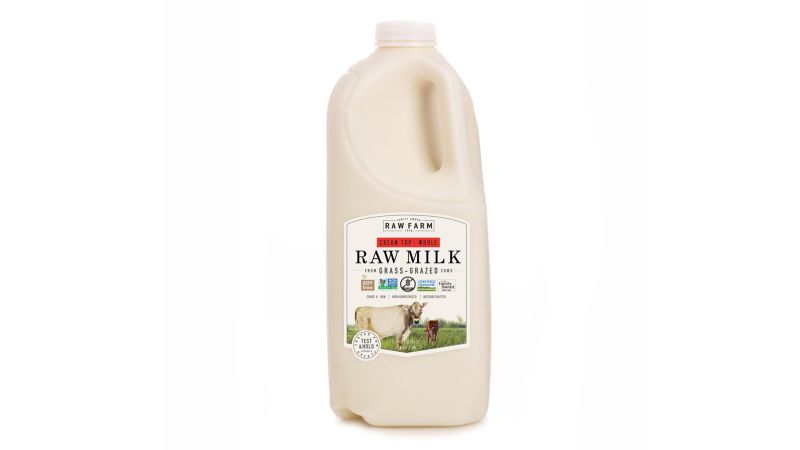How long can a Thanksgiving buffet sit out? A doctor explains

Nearly 80 million Americans are expected to travel over the Thanksgiving holiday, including many of you.
As family and friends gather together to share meals, it may be good to remember that foodborne illnesses are on the rise. These are mostly preventable with the right precautions.
Dr. Leana Wen: Foodborne infections are caused by pathogens, like bacteria, viruses and parasites. In the US, the most common form of foodborne infection is norovirus, which is a contagious virus that spreads from person to person through sharing utensils or touching objects that an infected person has touched and then touching your mouth. There are also several bacteria that cause foodborne illness, including salmonella, E. coli, Campylobacter and listeria.
Wen: Typical symptoms of foodborne illness include abdominal cramping, nausea, diarrhea and vomiting. Many people recover within 24 hours, but some can become very ill, depending on the pathogen and their underlying medical conditions. Those at highest risk for complications are young children, pregnant women, older individuals and people with immunocompromising medical illnesses.
Wen: Over the past year, there have been several instances of high-profile food recalls, but it’s important to remember that the majority of foodborne illnesses occur in everyday settings that don’t involve high-profile cases. Definitely be aware of food recalls (the US government maintains a comprehensive list of recent recalls) and make sure that you don’t have products in your fridge or pantry that are deemed unsafe. But don’t obsess over it, as chances are that the food you buy will be safe. However, there are many other things that you can and need to do make sure you abide by safe food preparing practices.
Wen: This is a great question and applies not only to turkey but also to other poultry and meat. The concern is to keep bacteria from growing when the turkey thaws.
There are three ways to safely thaw turkey. The easiest, though the one that takes the longest, is to thaw in the refrigerator — but it’s too late for that now. You put the turkey in a container to prevent it from dripping onto other food. It generally takes 24 hours for each four to five pounds of turkey, so an 8-pound turkey could take two days, and a 12-pound turkey could take three days.
The second way is to wrap the turkey in a leak-proof bag and submerge it in cold water. This takes about 30 minutes per pound, so the 8-pound turkey will take about 4 hours to thaw. You could use tap water and change the water every 30 minutes. It’s important to cook the turkey immediately after it is thawed to prevent bacteria growth.
The third way is to use a microwave. How long it will take depends on the specific microwave. This is the fastest method, but because some parts of the turkey will start to cook during microwaving, it’s essential to cook the turkey right after thawing.
It’s not a good idea to leave the turkey thawing on the counter in a warm room. That’s because parts of the turkey may still be frozen while some parts reach high enough temperature for the bacteria to rapidly multiply.
Wen: The rule of thumb to keep in mind is the “two-hour rule.” Once the food is cooked, it should not be left at room temperature for more than two hours. In the summer, if this is an outdoor picnic and the temperature is over 90 degrees Fahrenheit, food should be refrigerated after an hour.
This rule applies to all perishable foods, including meat, fish and milk products. Cooked leftovers should be refrigerated. The foods that do not need to be refrigerated according to the two-hour rule are baked goods such as cookies and cakes, dried meat such as jerky, whole fruit that is not chopped, and nuts.
Wen: The temperature at which bacteria multiples rapidly is between 40 degrees Fahrenheit and 140 degrees Fahrenheit. If the food is being kept warm by an appliance such that is over 140 degrees Fahrenheit — or if it’s being kept cooled at below 40 degrees Fahrenheit — this does not count toward the two-hour rule. But within two hours of removing from the warming or cooling apparatus, it needs to be refrigerated.
Wen: Yes, if it is stored in a timely manner in the refrigerator. Leftovers can typically be kept in the fridge for three to four days. They can also be frozen for three to four months.
Wen: We’ve talked about thawing and storage of leftovers, and we also need to discuss cooking or reheating to the right temperature. The temperature varies depending on the type of meat or fish. An internal meat thermometer is crucial for monitoring the temperature. Make sure that fish is cooked to 145 degrees Fahrenheit and chicken, turkey and poultry to 165 degrees Fahrenheit.
Be aware of cross-contamination. Do not use containers or utensils you have used with raw meat or fish to touch other products, like vegetables and fruits.
Also, remember that norovirus is the most common cause of foodborne illness. People who have nausea, vomiting, diarrhea, stomach cramps or other symptoms of norovirus should not prepare food. Everyone should wash their hands often and well with soap and water.
Event hosts should also ask that those who are experiencing signs of respiratory infection to stay home. And those who are especially vulnerable to severe illness due to underlying conditions should take additional precautions that are appropriate for their individual circumstance.







